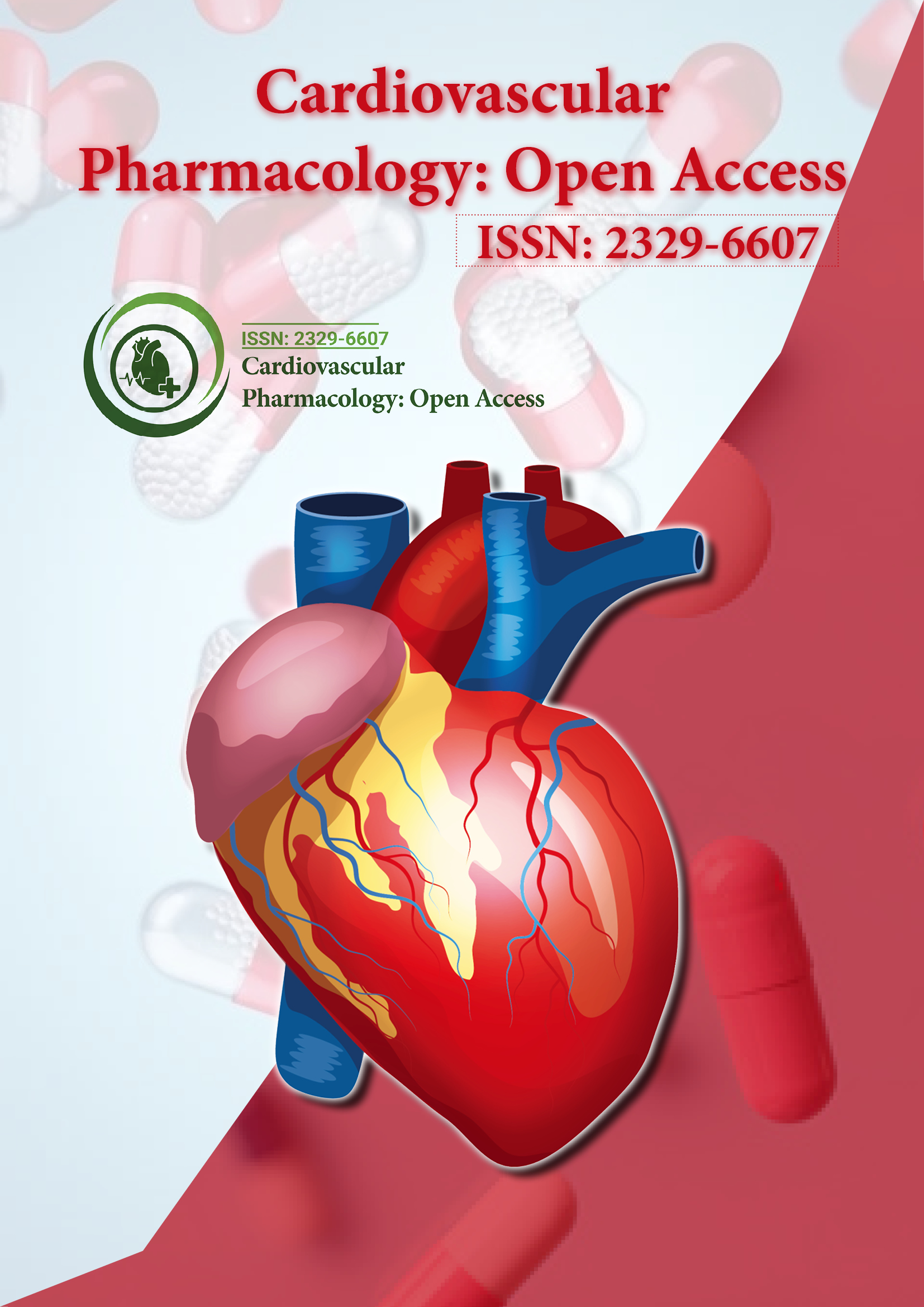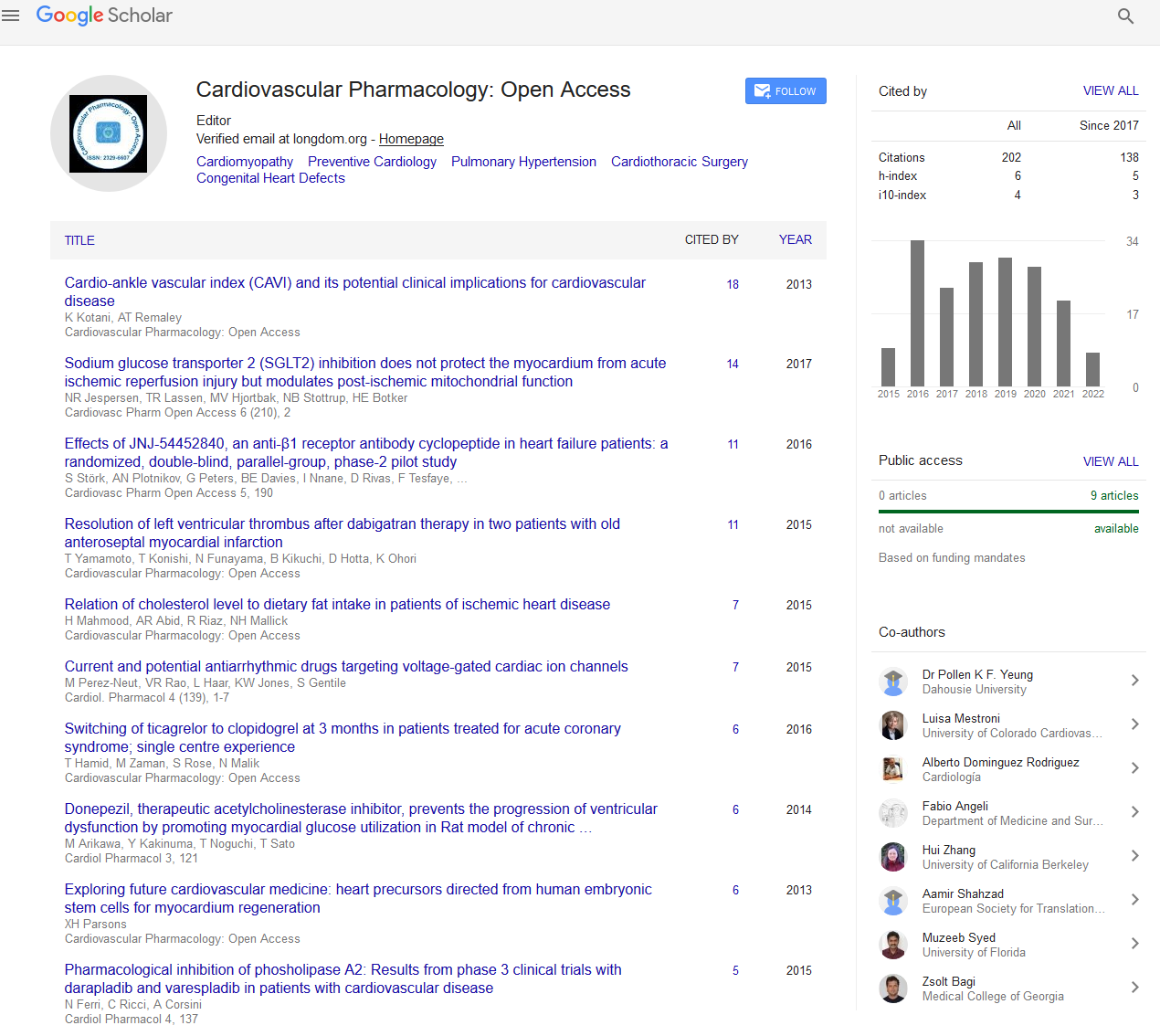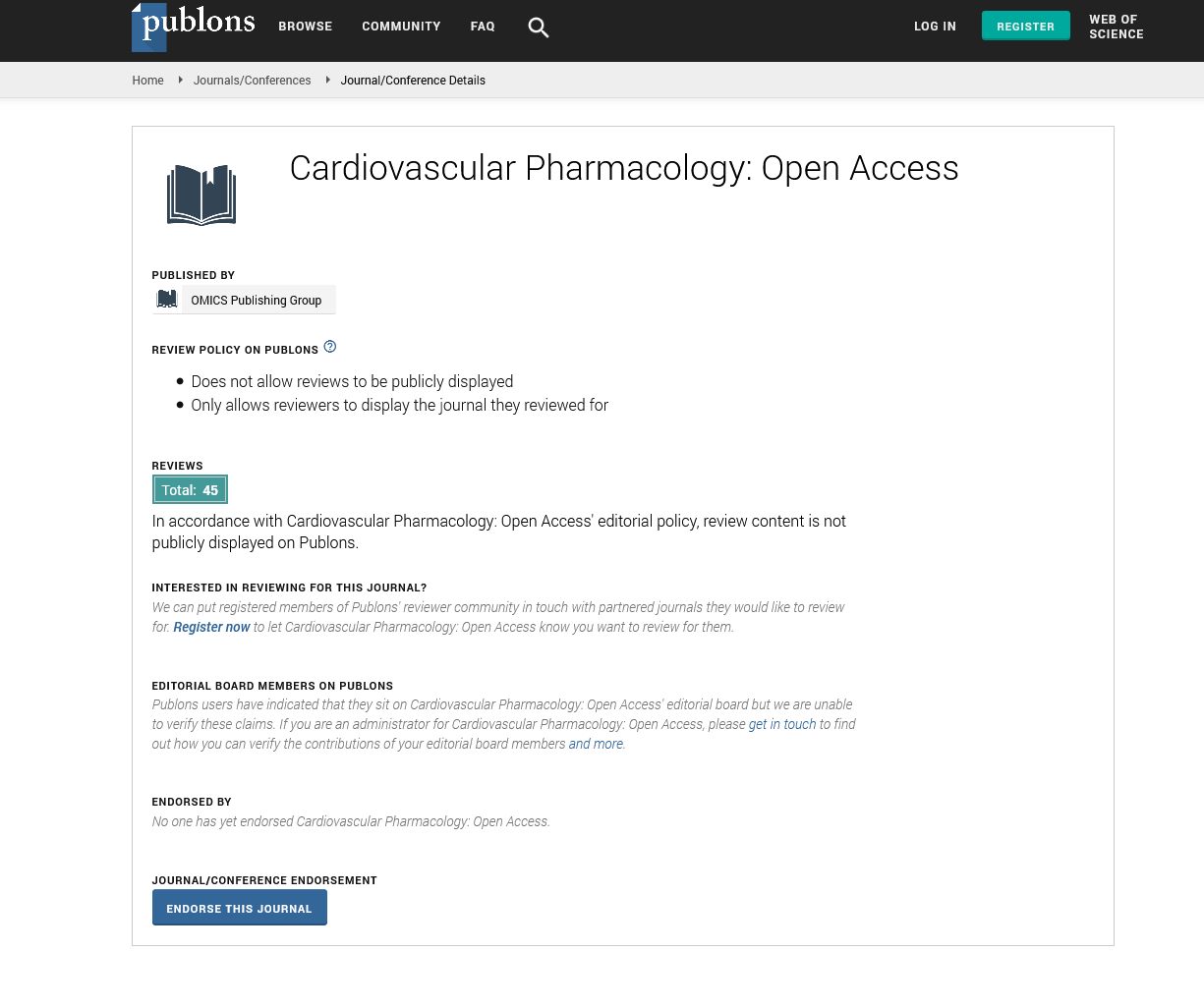Indexed In
- Open J Gate
- Cosmos IF
- RefSeek
- Hamdard University
- EBSCO A-Z
- OCLC- WorldCat
- Publons
- Geneva Foundation for Medical Education and Research
- Euro Pub
- Google Scholar
Useful Links
Share This Page
Journal Flyer

Open Access Journals
- Agri and Aquaculture
- Biochemistry
- Bioinformatics & Systems Biology
- Business & Management
- Chemistry
- Clinical Sciences
- Engineering
- Food & Nutrition
- General Science
- Genetics & Molecular Biology
- Immunology & Microbiology
- Medical Sciences
- Neuroscience & Psychology
- Nursing & Health Care
- Pharmaceutical Sciences
Opinion Article - (2024) Volume 13, Issue 3
Spontaneous Coronary Artery Dissection: Diagnosis and Pharmacological Management
William Tanaka*Received: 30-Aug-2024, Manuscript No. CPO-24-27838; Editor assigned: 02-Sep-2024, Pre QC No. CPO-24-27838 (PQ); Reviewed: 16-Sep-2024, QC No. CPO-24-27838; Revised: 23-Sep-2024, Manuscript No. CPO-24-27838 (R); Published: 30-Sep-2024, DOI: 10.35248/2329-6607.24.13.407
Description
Spontaneous Coronary Artery Dissection (SCAD) has become an essential area of research in cardiology, particularly over the past two decades. First identified in the medical literature in the late 20th century, CASD is often confused with more common acute coronary syndromes, leading to misdiagnosis and inappropriate treatment. This article explains the historical background of SCAD, the important contributions of influential figures in the field, advances in diagnostic techniques and the complexities of pharmacological management, while addressing the positive and negative aspects of the disease's progression.
Historically, DSAC has been largely an enigma due to its rarity and non-traditional presentation. The first cases described in the late 1970s and early 1980s often went unnoticed because traditional imaging techniques such as coronary angiography did not adequately detect the underlying pathology. It was only with the advent of advanced imaging modalities, such as Intravascular Ultrasound (IVUS) and Optical Coherence Tomography (OCT) that a clearer understanding of SCAD began to emerge. In this field have invested considerable effort to elucidate the disease's etiology, clinical manifestations and treatment options. This discovery was instrumental in reshaping the perception of cardiovascular risk, emphasizing the need to educate healthcare professionals about the possibility of SCAD in otherwise healthy populations.
The diagnosis of SCAD has evolved significantly over time. Initially presenting diagnostic challenges, SCAD is now approached with a combination of clinical assessment, imaging and history. Symptoms often resemble those of typical myocardial infarction, requiring careful differential diagnosis. Coronary angiography remains the gold standard for diagnosis; however, it is often supplemented by advanced imaging techniques that enable visualization of the dissection and its impact on blood flow. Studies have shown that increased clinician awareness leads to improved diagnostic accuracy, facilitating timely intervention and better patient outcomes.
Despite advances in diagnostic capabilities, challenges remain. In many cases, the absence of identifiable risk factors, combined with nonspecific clinical presentations, can lead to underdiagnosis or misdiagnosis, particularly in males in whom SCAD is less common. In addition, comorbid conditions, such as atherosclerotic disease, may disrupt this management, highlighting the need for continued education and awareness within the cardiology community.
Pharmacological management of SCAD is another area where significant progress has been made but challenges remain. The treatment approach typically involves the use of antiplatelet and anticoagulant medications to prevent ischemic thrombotic complications. Studies have shown that early use of medications such as aspirin and clopidogrel may improve clinical outcomes. However, there remains a lack of consensus regarding the specific timing and regimen of antithrombotic therapy, highlighting a significant gap in current guidelines.
In cases of persistent ischemia due to significant occlusion, current recommendations suggest a conservative approach, considering revascularization when absolutely necessary. Surgical interventions remain controversial because the underlying cause of SCAD often raises concerns about the durability of surgical repair and the risk of recurrence. The need for individualized therapy based on patient profile, emphasizing the need for a tailored approach in the treatment of patients with SCAD. The SCAD research landscape continues to evolve, drawing attention to the psychological aspects of the disease. Patients often face serious mental and emotional health problems following a SCAD event, exacerbating their health problems and anxiety. Attention to the psychosocial impacts of SCAD is essential and further research is needed to explore integrated treatment strategies that include both physical and mental health.
In conclusion, the diagnostic and pharmacological landscape for spontaneous coronary artery dissection reflects significant advances based on historical context and the contributions of influential researchers. Although diagnostic capabilities have improved and treatment strategies are increasingly based on individualized approaches, persistent challenges such as misdiagnosis, heterogeneity of treatment regimens and psychological impact on patients remain prevalent. Continued research and collaboration within the cardiovascular community will be essential to manage these complex issues and improve outcomes for patients with SCAD.
Citation: Tanaka W (2024). Spontaneous Coronary Artery Dissection: Diagnosis and Pharmacological Management. Cardiovasc Pharm. 13:407.
Copyright: © 2024 Tanaka W. This is an open access article distributed under the terms of the Creative Commons Attribution License, which permits unrestricted use, distribution and reproduction in any medium, provided the original author and source are credited.


